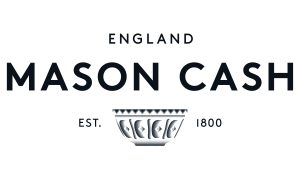Mason Cash has been the choice of home cooks and bakers for centuries.
Mason Cash had been producing mixing bowls during the 1800’s, but in 1901 they designed and manufactured the very first iconic Mason Cash mixing bowl. The design of the bowl has endured the test of time and has become something of a design classic. In fact, the design has barely altered since then, which is why the brand is still renowned for its innovative, classic kitchenware today.
The popular-sized mixing bowls have had a nautical makeover. These iconic mixing bowls will suit all kitchens, featuring salt and freshwater creatures in trendy blue tones and greys. This Nautical Collection is made from chip-resistant earthenware and is heavy enough to counter the tendency to move during manual mixing.
The Size 24 Nautical Mixing bowl is ideal for bread, pastry, cake, pudding and cookie mixes, as well as prepping smaller batches of ingredients while baking or cooking. A perfect size for baking with children. The smaller mixing bowl in a light blue colour has detailed embossments of salt and freshwater creatures; the embossment also helps to grip the bowl when mixing.
The shape allows you to hold the bowl in one arm easily while the other can be used for beating the mixture, whereas the wide shallow shape is just right for kneading. The white interior makes it easy for the cook to see the colour and consistency of the mixture, ensuring the perfect result. The three different-sized bowls in the range are designed to nest together for different mixing requirements and easy storage.
Features:
- 24 cm diameter – 11 cm high | 2L Capacity
- Made of chip-resistant earthenware
- Heavy enough to provide stability
- The embossed pattern provides a better grip
- Microwave -Dishwasher -Freezer Safe
Please note that colour may appear differently depending on the monitor or device.

The origins of Mason Cash can be traced back to a pottery operating at Church Gresley in the heart of the English ceramic industry in 1800. Church Gresley was located close to all the raw material and fuel sources required to make ceramics and had fantastic transport links to take finished goods all over the UK and the world.